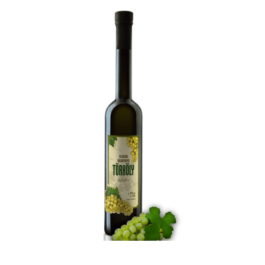Description
Unique Tulip Glass:
The culture of Palinka drinking and tasting is not just about the drink, it contains a characteristic object culture. Lots of Palinka bottles and glasses are known which are made in different shapes and from different materials. But everybody agrees that the unique tulip glass and the „whistling” bottle are the best companions of the Hungarian „soul-warmer”.
The characteristic shape of the „whistling” bottle is also rounded at the bottom, then it is narrowed at the top and its neck is three-four times longer then its body. Its name derived from a simple occurrence, when the cork was pulling out from the bottle, a characteristic „whistling” voice was heard because of the air getting out from the bottle neck. Nowadays Schnapps bottles with cork are quite rare, but the „whistling” bottle stayed popular, because the quality of the Schnapps can be established immediately after opening the bottle by the collected scents in the narrow bottleneck.
The Story:
Naturally occurring glass, especially the volcanic glass obsidian, was used by many Stone Age societies across the globe for the production of sharp cutting tools and, due to its limited source areas, was extensively traded. Archaeological evidence suggests that the first true glass was made in coastal north Syria, Mesopotamia or ancient Egypt. The earliest known glass objects, of the mid third millennium BCE, were beads, perhaps initially created as accidental by-products of metal-working (slags) or during the production of faience, a pre-glass vitreous material made by a process similar to glazing.
The most familiar, and historically the oldest, types of manufactured glass are “silicate glasses” based on the chemical compound silica (silicon dioxide, or quartz, the primary constituent of sand. The term glass, in popular usage, is often used to refer only to this type of material, which is familiar from use as window glass and in glass bottles. Of the many silica-based glasses that exist, ordinary glazing and container glass is formed from a specific type called soda-lime glass, composed of approximately 75% silicon dioxide (SiO2), sodium oxide (Na2O) from sodium carbonate (Na2CO3), calcium oxide (CaO), also called lime, and several minor additives.







Gabor Hortobagyi –